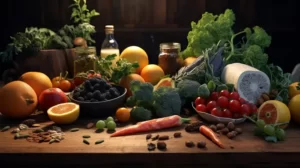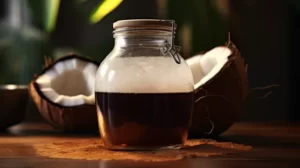Did you know that over 100 trillion microorganisms call your body their home? What’s even more fascinating is that one seemingly innocent act can add another 40 million to that count. When you engage in a simple 10-second kiss, studies show that you exchange approximately 80 million bacteria with your partner. That’s right – a kiss is not just a kiss.
Under normal circumstances, your mouth houses over 700 different types of bacteria. The specific types of bacteria residing in your mouth are strongly influenced by the people you live with, your lifestyle habits, and the food you consume. Now, let’s dig deeper into the intriguing world of bacteria transmission during kisses.
Bacteria Exchange in Couples
A study carried out in the Netherlands investigated the bacterial exchange that occurs during kisses between 21 couples. Researchers recorded data on how often each couple shared a smooch and took bacterial samples from their cheeks, tongues, and saliva for analysis.
The study found that couples who engage in frequent kisses share similar bacteria in their saliva. In fact, it was discovered that nine intimate kisses a day could make the bacterial environment nearly identical in both partners.
“Intimate kissing involving full tongue contact and saliva exchange appears to be a courtship behavior unique to humans and is common in over 90% of known cultures,” says researcher Remco Kort. “Interestingly, the current explanations for the function of intimate kissing in humans include an important role for the microbiota present in the oral cavity.”
Furthermore, the research revealed that when you live with other people, the fact that you have similar lifestyle habits and eat similar foods also leads to sharing common bacteria throughout your body. This was particularly true for bacteria living on the tongue.
The Good and the Bad of Bacteria
Now that you know more about bacteria and kissing, you may be wondering if exchanging these microorganisms is a good or bad thing. Well, it’s a little bit of both.
On a positive note, swapping bacteria can help to maintain a diverse and balanced microbial ecosystem in the mouth. This diversity plays an important role in supporting oral health. Some good bacteria can even help to neutralize harmful substances in our mouths and fight off the harmful bacteria that cause dental problems. So, in a way, a kiss can be seen as a form of “oral vaccination.”
However, there are also some less-than-pleasant consequences of bacteria swapping. While many bacteria in the mouth are harmless and even beneficial, some can contribute to gum disease, tooth decay, and bad breath.
Tips for a Healthier Kissing Experience
Here are some tips to reduce the risks and make your next kissing session healthier:
- Maintain good oral hygiene: Regularly brushing, flossing, and using an antibacterial mouthwash can help to reduce the harmful bacteria in your mouth. Keeping your oral hygiene in check is not only crucial for a great kissing experience, but it also contributes to healthy teeth and gums.
-
Don’t share toothbrushes: Even if you’re kissing and sharing bacteria in other ways, sharing a toothbrush can introduce harmful bacteria directly into your gums. It’s best for each person to have their own toothbrush and to replace it every three months.
-
Avoid kissing when sick: When you’re sick, the number of harmful bacteria in your body increases. To prevent unwanted bacteria from spreading, avoid kissing until you feel better.
-
Stay hydrated: Drinking water throughout the day can help to flush away bacteria and keep your breath fresh.
-
Eat a balanced diet: Consuming a variety of healthy foods can promote a balanced oral microbial ecosystem. Additionally, steer clear of sugary foods and drinks that can disrupt this balance.
In conclusion, while the exchange of bacteria during a kiss might sound a little unsettling at first, it is a natural part of our daily lives. With good oral hygiene practices and a few precautionary measures, you can continue to enjoy the intimate and romantic moments that come with sharing a kiss.



